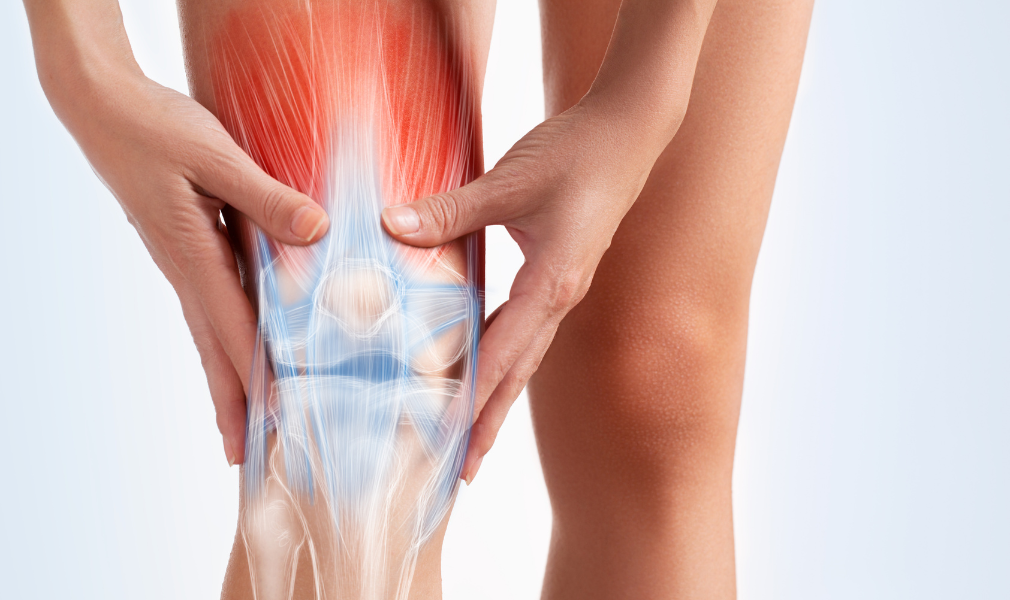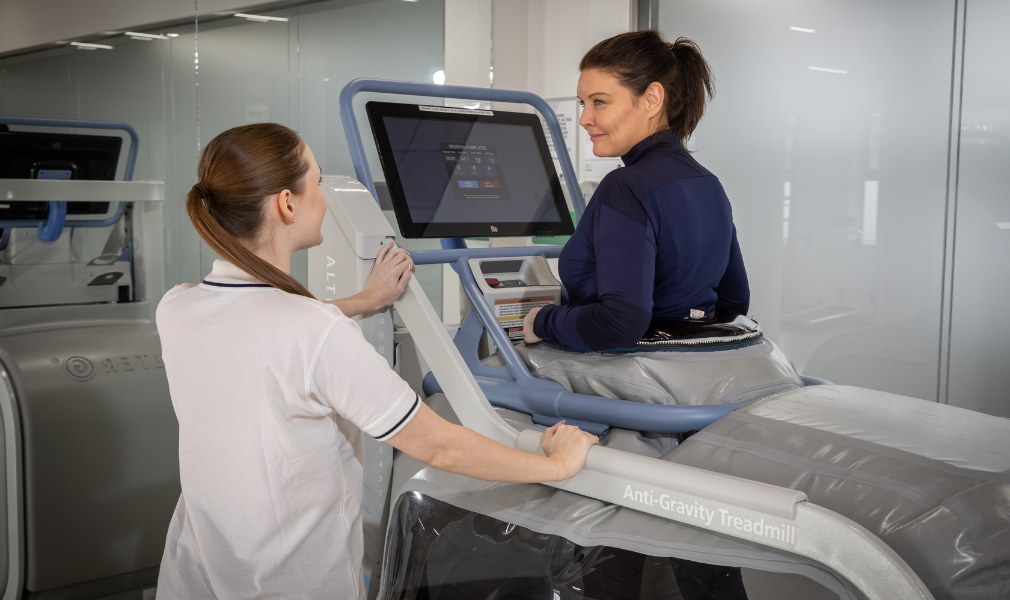Knee pain when bending or squatting is a common issue affecting people of all ages. Whether it’s discomfort while crouching to pick something up, pain while exercising, or stiffness after prolonged sitting, knee pain can significantly impact daily activities.
There are multiple causes of knee pain, ranging from temporary overuse injuries to chronic conditions such as arthritis. Understanding the underlying cause is crucial for effective treatment and long-term relief.
In this guide, we’ll explore:
- Common causes of knee pain when bending
- Diagnosis and medical investigations
- Treatment and relief strategies
- Preventative measures
- When to seek medical attention
By the end of this article, you’ll have a clear roadmap to understanding and managing squatting knee pain effectively.
The Anatomy of the Knee
The knee is one of the largest and most complex joints in the body. It acts as a hinge, allowing movement while providing stability. The knee consists of:
- Bones: The femur (thigh bone), tibia (shin bone), and patella (kneecap).
- Cartilage: The menisci act as shock absorbers, preventing friction between bones.
- Ligaments: ACL, PCL, MCL, and LCL stabilize the knee and prevent excessive movement.
- Tendons: These connect muscles to bones, helping in movement.
- Bursae: Fluid-filled sacs that reduce friction between knee structures.
Because of its complexity, the knee is vulnerable to injuries, particularly when bending, squatting, or engaging in high-impact activities.
Common Causes of Knee Pain When Bending or Squatting
1. Patellofemoral Pain Syndrome (Runner’s Knee)
Symptoms:
- Pain around or behind the kneecap (patella)
- Discomfort after prolonged sitting, climbing stairs, or squatting
- Cracking or grinding sensation
Cause:
Often due to overuse, muscle imbalances, or improper patellar tracking. This is common in runners, cyclists, and those who squat frequently.
2. Meniscus Tear
Symptoms:
- Sharp pain when twisting the knee
- Swelling and stiffness
- A ‘locking’ or ‘clicking’ sensation
Cause:
A torn meniscus (the cartilage cushion in the knee) often results from sudden twisting movements, overload or wear and tear over time.
3. Patellar Tendonitis (Jumper’s Knee)
Symptoms:
- Pain just below the kneecap
- Stiffness after periods of inactivity
- Worsens with jumping, running, or squatting
Cause:
This occurs due to overuse, excessive jumping, or repetitive knee movements, leading to inflammation of the patellar tendon.
4. Osteoarthritis
Symptoms:
- Morning stiffness
- Pain that worsens with activity
- Swelling and tenderness
Cause:
Normally age-related cartilage breakdown can lead to bone-on-bone friction, causing pain and stiffness.
5. Bursitis
Symptoms:
- Swelling on the front or inside of the knee
- Pain when kneeling or bending
- Warmth or redness
Cause:
Repetitive kneeling, squatting, or direct impact can cause bursa inflammation, leading to discomfort.

Diagnosis and Investigations
If knee pain persists, seeking medical advice is essential. Healthcare professionals may perform:
- Physical Examination – Checking knee mobility, swelling, and pain points
- X-rays – To identify fractures or arthritis
- MRI Scans – To examine soft tissue injuries (ligaments, meniscus, etc.)
- Ultrasound – To assess tendon and bursa inflammation
LycaHealth offers diagnostic imaging services, including MRI scans at Canary Wharf and Orpington clinics.
Treatment and Relief Strategies
RICE Method (Rest, Ice, Compression, Elevation) – A Guide for Effective Pain Relief
The RICE method is a widely recommended approach for managing minor injuries, swelling, and pain, particularly in joints such as the knee. This method helps reduce inflammation, promote healing, and prevent further damage. Below is an expanded explanation of each step, incorporating best practices and UK guidelines.
1. Rest – Allow Recovery Without Complete Immobilisation
Rest is crucial for preventing further strain or damage to the injured area. However, complete immobilisation is not usually necessary unless advised by a healthcare professional.
- Avoid activities that worsen pain or cause discomfort, such as running, jumping, or prolonged standing.
- Gentle movement is encouraged to maintain joint flexibility and prevent stiffness. Try light walking or non-weight-bearing exercises like gentle knee bends or seated leg raises.
- If pain persists or worsens despite rest, seek medical advice.
2. Ice – Reduce Swelling and Numb Pain
Applying an ice pack can help control swelling and provide pain relief by numbing the affected area.
- How long should ice be applied?
- Apply a cold pack wrapped in a thin towel (to prevent ice burns) for 15–20 minutes at a time.
- How often? Every 2 to 3 hours during the first 48 hours after the injury.
- Avoid direct contact between ice and skin to prevent frostbite or irritation.
3. Compression – Support the Joint and Minimise Swelling
Compression helps to reduce swelling and provide stability to the knee using:
- Elastic bandages
- Knee supports
- Compression sleeves
- Taping techniques
When should compression be used?
✅ When moving, standing, or walking to provide support.
✅ During mild activities such as walking indoors.
❌ Avoid wearing knee supports when:
- Elevating the leg (it may restrict circulation).
- Inactive or sleeping (prolonged pressure may reduce blood flow).
The compression should be firm but not too tight—if you experience numbness, tingling, or increased pain, loosen the bandage immediately.
4. Elevation – Reduce Swelling and Improve Circulation
Keeping the knee elevated helps to reduce fluid buildup and swelling, promoting faster healing.
- How to elevate properly?
- Raise the knee above heart level (e.g., rest it on cushions or a footstool when sitting).
- When to elevate? Ideally, whenever sitting or lying down, especially in the first 24–48 hours after injury.
- Avoid keeping the leg in one position for too long—change positions occasionally to encourage healthy blood flow.
When to Seek Medical Advice?
The RICE method is effective for minor knee injuries, but you should seek medical attention if:
- Pain does not improve after a few days or worsens.
- There is severe swelling, bruising, or instability.
- You experience difficulty bearing weight or hear a popping sound at the time of injury.
- Signs of infection appear (e.g., redness, warmth, or fever).
For persistent knee pain, consulting a GP, physiotherapist, or sports injury specialist may be beneficial.
Strengthening Exercises for Knee Support
One of the most effective ways to reduce knee pain when bending or squatting is through physiotherapy and targeted strength training. Strengthening the muscles around the knee can improve stability, reduce stress on the joint, and promote better movement mechanics.
A balanced approach includes both strength training (to support the knee joint) and stretching (to improve flexibility and reduce stiffness). Here’s how each plays a role in knee pain relief and injury prevention.
Strengthening the quadriceps, hamstrings, glutes, and calf muscles can help offload pressure from the knee joint and improve overall function. These exercises should be done at least 3–4 times a week for maximum benefit.

Quadriceps Strengthening (Front of the Thigh)
The quadriceps play a crucial role in knee extension and stability. Weak quads can lead to poor patellar tracking, which may cause pain when bending or squatting.
Best Quadriceps Exercises:
- Straight Leg Raises – Lying on your back, raise one leg straight while keeping the other bent. Hold for 5 seconds and slowly lower. Repeat 10–15 times per leg.
- Wall Sits – Stand with your back against a wall and slowly slide down into a squat position, holding for 20–30 seconds before standing back up.
- Step-Ups – Using a low step, step up with one leg and bring the other leg up before stepping back down. Repeat 10 times per leg.
Hamstring Strengthening (Back of the Thigh)
Hamstrings support knee bending and work with the quadriceps to maintain balance and stability.
Best Hamstring Exercises:
- Hamstring Curls – Using a resistance band or machine, curl your heels toward your glutes, then slowly release.
- Bridges – Lie on your back with knees bent, lift your hips off the floor while keeping your heels planted. Hold for a few seconds before lowering.
Glute and Hip Strengthening
Strong glutes and hips help prevent excessive knee movement, which can reduce stress on the joint during squatting and bending.
Best Glute & Hip Exercises:
- Clamshells – Lie on your side with knees bent, then lift your top knee while keeping feet together. Repeat 12–15 times per side.
- Side-Lying Leg Raises – Lift one leg straight up while lying on your side to activate the hip abductor muscles.
- Resistance Band Walks – Place a resistance band around your thighs and take small lateral steps to activate the glute medius.
Calf Strengthening
Calf muscles play a key role in knee shock absorption and help with balance when squatting or bending.
Best Calf Exercises:
- Calf Raises – Stand on a flat surface and rise onto your toes, holding for 2 seconds before lowering.
- Seated Calf Raises – Sit in a chair, place weight on your thighs, and lift your heels off the ground.
Stretching Exercises for Knee Flexibility
Tight muscles can increase stress on the knee joint and contribute to pain during bending or squatting. Incorporating daily stretching can help maintain flexibility, reduce stiffness, and promote better movement.
Quadriceps Stretch
- Stand on one leg and pull your other foot towards your glutes. Hold for 30 seconds per leg.
Hamstring Stretch
- Sit on the floor with one leg straight and the other bent. Reach towards your toes and hold for 20–30 seconds per leg.
Hip Flexor Stretch
- Step one foot forward into a lunge position and push hips forward while keeping your back straight. Hold for 20–30 seconds.
Calf Stretch
- Stand facing a wall, step one leg back, and push the heel into the ground. Hold for 20–30 seconds per leg.
The Role of Physiotherapy in Knee Pain Management
A physiotherapist can help tailor an individualised rehabilitation plan based on the specific cause of your knee pain. If your pain is persistent, visiting a physio at LycaHealth can provide:
- Gait analysis – Identifying issues with walking patterns that may contribute to knee strain
- Manual therapy – Including massage, mobilization, and trigger point release
- Taping or bracing – Supporting the knee joint for better stability
Progressive exercise programs – To ensure safe recovery and long-term improvement
Medications*
- NSAIDs (e.g. Ibuprofen) for pain relief
- Corticosteroid injections (for severe inflammation)
Knee Braces and Orthotics
Wearing a knee brace or custom orthotics can help reduce pain and instability.
Surgery (For Severe Cases)
If conservative treatments fail, surgical options include:
- Arthroscopy (Keyhole surgery)
- Meniscus repair
- Total knee replacement (for advanced arthritis)
Preventing Knee Pain When Bending or Squatting
- Maintain a Healthy Weight – Excess weight increases knee strain
- Strengthen Your Legs – Strong thigh, glute, and calf muscles help support knee movement
- Use Proper Form – Ensure correct squat technique to avoid excessive knee strain
- Wear Supportive Footwear – Reduces impact on knees
- Warm-Up Before Exercise – Prevents injuries by preparing muscles
When to See a Doctor? If you experience any of the following, seek medical attention:
- Severe pain that limits movement
- Knee instability or ‘giving way’
- Swelling that doesn’t improve
- Inability to fully straighten or bend the knee
Book an Orthopaedic Consultation at LycaHealth
Conclusion
Knee pain when bending or squatting can be caused by various factors, from overuse injuries to chronic conditions like arthritis. Understanding the cause of your pain is the first step towards effective treatment and prevention.
If your symptoms persist, consulting a private GP or physiotherapist can provide a clear diagnosis and tailored treatment plan. LycaHealth’s clinics in Canary Wharf and Orpington offer expert care, diagnostic imaging, and physiotherapy to help manage knee pain effectively.
Don’t ignore knee pain – take action today!
Book an Appointment at LycaHealth Canary Wharf or Orpington.
*Always read the patient information leaflet provided and never exceed the recommended dose.

